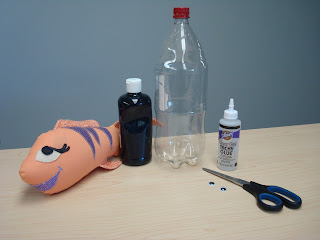We all know that water has a very important role in our lives. We use it to drink, to cook our food, to bathe and brush our teeth, and to water our plants or pets. But water affects our lives in so many other ways we might not think about. Check out these 5 unique ways that you use water!
 1. Heating and Cooling.
1. Heating and Cooling. Many homes and businesses are using something called
“geothermal energy” to heat and cool their buildings. “Geo” means “from the earth” and “thermal” means heat so this type of energy uses the heat from the under the ground to regulate the temperature of a particular system. Buildings that use this system pump a liquid, often groundwater, through a series of pipes and devices like “heat exchangers” to use the natural heat from the earth to warm up the air inside. During hot summers, a geothermal system can also cool down the air by working in reverse, absorbing the heat from inside and moving it back down into the earth. This very efficient system costs less than other modern systems and almost none of the energy is wasted.
 2. Electricity.
2. Electricity. Hydroelectric power is a clean, renewable, and reliable form of energy that converts the energy of falling water into electricity. Do you know about the Hoover Dam near Las Vegas, Nevada? It’s one of the nation’s largest hydropower facilities, with each wing of the plant rising
nearly 20 stories for a length of 650 feet (almost 2 football fields). With 17 main turbines, the average annual generation is about 4.2 billion kilowatt-hours. That’s over 3.1 billion horsepower and enough energy to serve 1.3 million people, all by using the water!
3. Wearing Clothes. Did you know that
2.6% of the water used globally is for cotton consumption? That cotton t-shirt that you’re wearing required a lot of water to go from growing in a field to being hung in your closet. And that’s not even taking into consideration the amount of water it takes to dye your shirt, or any other articles of your clothing, into the fun colors you like to wear.
 4. Reading, writing, and printing.
4. Reading, writing, and printing. Did you know that in the US, we use about 69 million tons of paper and paperboard (like boxes and folders) each year? In the process of just making the paper, water is used to grow the trees, maintain the tools that are used to cut the trees, turn the trees into a pulp, and maintain the machines that turn the pulp into paper? And that’s just to make blank paper. Water is also used to make the ink to print
2 billion books yearly or put fun cover photos on 350 million magazines. It takes roughly 1,160 gallons of water to make a single pound of paper and that’s a lot of paper.
5. Using a computer. If you think using email, the internet, and, in general, going paperless is the perfect solution:
think again. The water it takes to make a single laptop is about the same as washing 70 loads of laundry. A desktop? 1,500 gallons! Every kind of computer and IT product demands vast quantities of “ultra-pure water”, a kind of water that highly distilled from even larger quantities of “regular” water.
So? How many did you know? If you can think of other ways that water secretly helps our lives, share them with us at
info@groundwater.org.












